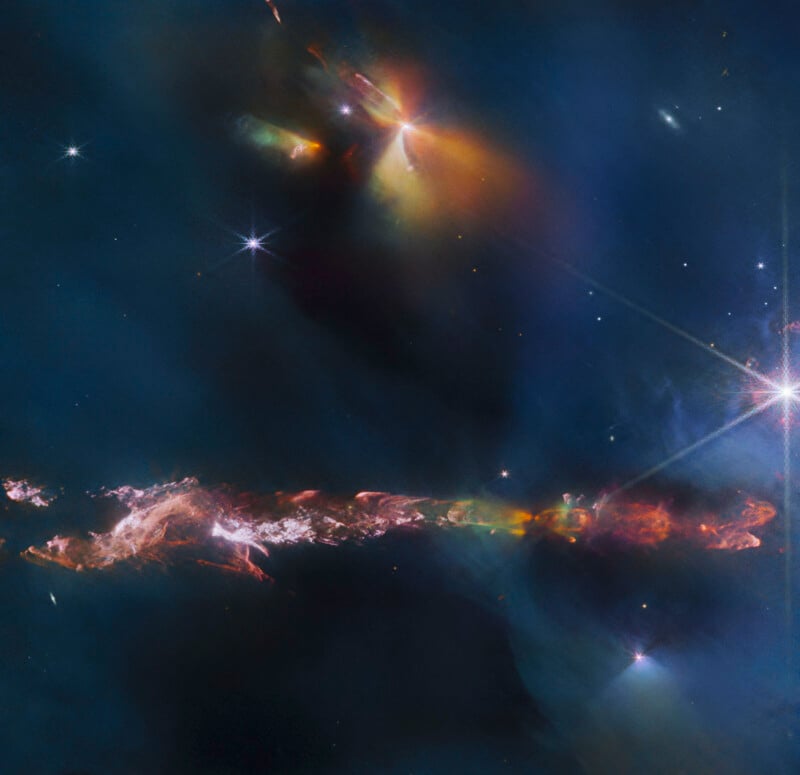Gaze Upon Webb’s Latest Photo of a Colorful Stellar Nursery

In this image of Herbig-Haro 797, captured by Webb’s NIRCam instrument, the space telescope used eight different filters ranging from 1.5 to 4.7 μm wavelengths. In the photo, the violet and purple regions show Fe II, blue shows molecular hydrogen and methane, green shows PAHs, orange is carbon monoxide, and red is also molecular hydrogen. | Credit: ESA/Webb, NASA & CSA, T. Ray (Dublin Institute for Advanced Studies)
Among the most incredible spectacles in deep space are Herbig-Haro (HH) objects: bright patches of the interstellar medium associated with newborn stars, also known as protostars. Webb has imaged HH 797, capturing one of the best images of a Herbig-Haro object.
This is not the James Webb Space Telescope’s first Herbig-Haro photo, as the $10 billion space telescope has also looked at Herbig-Haro 46/47 and Herbig-Haro 211 as part of a larger overall investigation into the wonders of protostars. By the way, HH 797 is directly north of HH 211. They are separated by only about 30 arcseconds.
Among the challenges of studying HH objects is their relatively short lifetime. While galactic timescales often exist in the millions or even billions of years, Herbig-Haro objects typically survive for only a few tens of thousands of years — a relative blink of an eye for the Universe. Fortunately for scientists, HH objects are pretty plentiful. There are an estimated 150,000 of them just in the Milky Way galaxy, although many are too far away to be adequately observed.
The new Webb subject, HH 797, is located near the young open star cluster IC 348, which is close to the eastern edge of the Perseus dark cloud complex, a popular target for amateur astronomers. HH 797 itself is in the lower half of the image. The bright objects in the upper region of the photo are thought to be home to a couple more protostars. Webb used its near-infrared camera (NIRCam) to capture the new image.
Webb’s brilliant new look at HH 797 offers researchers new insights into the nature of the object. Based on prior ground-based observations, it was believed that the gas near HH 797’s eastern edge was more redshifted because of the outflow rotation. However, thanks to NIRCam, it is now evident that what was once thought to be a single outflow is, in fact, a pair of parallel outflows with their own series of shocks, which explain the confusing asymmetries previously observed.
Infrared imaging is an especially powerful way to observe newborn stars and their gas outflows because baby stars are still embedded within the gas and dust from which they form, which infrared imagers can peer through. Further, the turbulent stellar nursery produces molecular hydrogen and carbon monoxide, emitting infrared light that Webb can detect to visualize the energetic outflows from growing stars. NIRCam is very good at observing superheated molecules, which can reach temperatures of thousands of degrees Celsius.
Image credits: ESA/Webb, NASA & CSA, T. Ray (Dublin Institute for Advanced Studies)